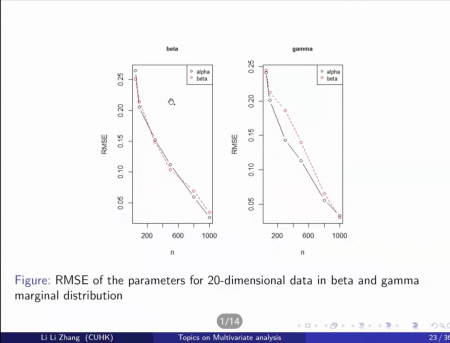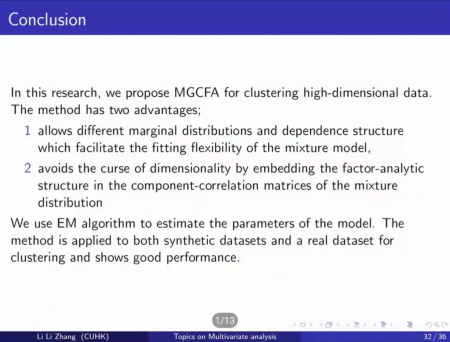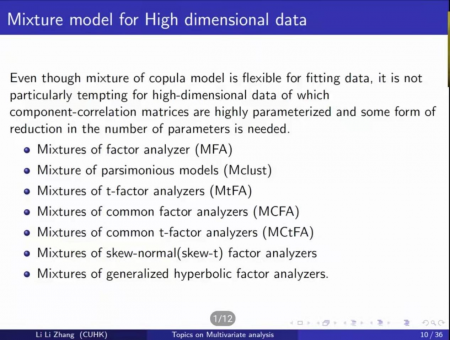编辑:时间:2021-12-02 19:54:49 浏览次数:
On the afternoon of November 24th, at the invitation of the School of Statistics, Dr. Lili Zhang, an assistant researcher at the Chinese University of Hong Kong, gave an online lecture entitled Topics on multivariate analysis to the teachers and students of the School of Statistics. This lecture was presided over by Liu Xiaohui, deputy dean of the School of Statistics, and some teachers and graduate students of the School of Statistics participated.

In the lecture, Zhang Lili briefly introduced cluster analysis and the application of mixed models in cluster analysis. Because of the importantance to choose a suitable mixture distribution model, Dr. Zhang Lili first introduced several types of classic mixture models and their properties, including Gaussian mixture models, mixed non-elliptical contour distributions of multivariate oblique normal distributions, the mixture of shifted asymmetric Laplace distribution, the mixture of generalized hyperbolic distribution, etc.

Later, Dr. Lili Zhang explained how to cluster high-dimensional data based on the Copula factor mixture model. Considering that in real life, cluster analysis of high-dimensional data has the following challenges: (1) The marginal distribution of each component may not follow a single distribution, and the correlation between each other may follow different patterns, (2) Data dimensionality If it is too high, dimensionality reduction needs to be performed before specific clustering.For the problem (1), the Copula function is an important statistical tool used to characterize such correlation patterns, and for (2), the existing factor analysis model can be effectively used for dimensionality reduction processing of high-dimensional data. In view of this, Dr. Zhang Lili focused on how to use Copula and factor analysis model to perform cluster analysis of high-dimensional data, and combine it with the mixed factor analyzer (MFA), the mixed minimalistic Models (Mclust), the mixed common factor analyzer (MCFA) and so on.

At the end of the lecture, Zhang Lili also introduced the application of spatial data change point detection method in glaucoma analysis, vector autoregressive model and related methods that can be used to determine the order of the model.
The wonderful speech by Dr. Zhang Lili fully demonstrated the theory and practical analysis of mixed model research, and provided useful examples for teachers and students of the School of Statistics to engage in relevant research work.
